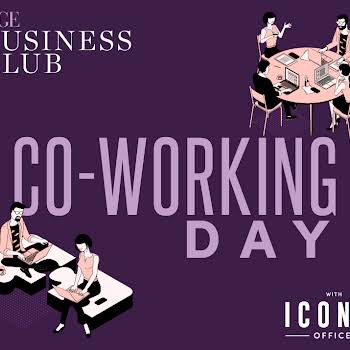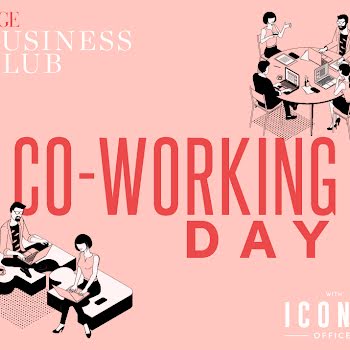
By Colette Sexton
27th Aug 2019
27th Aug 2019
Sick of choking on fumes as you battle the daily commute? Colette Sexton explores the rise in remote working.
“Remote working gives you your life back,” Vanessa Tierney, co-founder of Abodoo, a recruitment platform promoting flexible, co-working, hybrid and remote working options, has my attention with her first sentence.
Vanessa lists off the reasons why more Irish people are making the change to remote working: hours saved daily by not facing a rush-hour commute, working lives that better suit family demands, ease of access into employment for those with mobility issues, and an escape from escalating city house prices to affordable and beautiful locations.
With those benefits, it is no wonder there was a 171% increase in the number of Irish people searching for jobs including the word “remote” in 2017. According to Tracy Keogh, co-founder of Grow Remote, a voluntary group that aims to make remote working more accessible to people across Ireland, that number is only going up.
Valentia Island
Grow Remote is currently working with 2,371 people looking to repopulate to rural locations, and it has already helped three families move back to Valentia Island. This has had a knock-on effect of helping the school on the island to remain open. “Often, people just want the flexibility, and they see that remote working is a very feasible career path,” says Tracy. “Other times, a life event means they need to move location, or the pressures in cities force them out.”
“A remote worker will save up to €7,000 per year once on savings such as office costs such as commuting fares, takeaway lunches.”
Freedom and flexibility are the main benefits of remote working life. As long as you have internet access, you can work from anywhere – your back garden, a beach in Bali, a hut in rural Co Mayo – the world is your office. Remote working is also a cash saver.
On average, a remote worker will save up to €7,000 per year once savings on office costs such as commuting fares, takeaway lunches, additional office clothes, and so on are taken into account.
Smart working
While this all might sound great, you might be telling yourself that remote working could not possibly apply to your job. But according to Vanessa, remote work suits any kind of role outside of manufacturing, medical procedures or that require onsite processing.
“Anything that happens in your brain and on your laptop can be done remotely, anything that happens with your hands must happen onsite.”
“Every type of work will have an element that can be done remotely, whether one day or five days a week. That is why we use the term ‘smart working’, where a company enables the workforce to be remote some or all of the time, depending on what they do.”
Anything that happens in your brain and on your laptop can be done remotely, anything that happens with your hands must happen onsite, according to Tracy. Some sectors are slower than others to move, but she says there are rewards for forward-looking companies.
“Anecdotally, we’re noticing that the anonymous staff feedback on Glassdoor for companies who hire remote workers is pretty high, like four or five out of five. I think that’s because the kinds of companies who hire remotely really focus on their people, their communication, and building a great culture,” says Tracy.
Loneliness
But stall your horses before you sign up. While it all sounds great, remote working can be isolating. Loneliness is the number one killer of remote work. But companies are catching on to this problem and coming up with solutions.
“Employees in the likes of Shopify will tell you that they’ve never worked in a company where they’ve felt as connected with their teammates before,” says Tracy. “Still, the lack of physical interaction would get to you; that’s where meet-ups and co-working spaces add huge value to this growing population.”
Vanessa says she was also worried about isolation when she began remote working in 2011 because she is quite social and enjoys engaging with others. She has learned some tricks to avoid being alone during the working week.
“There are options out there to consider working in a local co-working hub once or twice a week, arranging meetings face to face with clients and customers and indeed ensuring that you have a video meeting each day with a colleague.
“What is amazing about remote working is that you get to connect on a far deeper level with your colleagues, because you get an insight into their lives, and in many cases meet spouses, children, and pets,” Vanessa says.
Stay connected
For anyone considering making the leap to remote working, Vanessa recommends baby steps and a lot of planning. “Make sure you stay connected and perhaps ease into remote working with one or two days a week initially. But most importantly, have clear expectations from your employers in terms of productivity and that your career trajectory can remain, even when outside of the office,” she says.
?utm_source=ig_web_copy_linkWhile it is easier for new companies to set up remote teams from scratch, according to Vanessa, existing companies can also implement remote working successfully with the right investment, stakeholder support and a smart working strategy.
“Ireland is still at the early adoption stage for smart working, but with the highest percentage of population living in regional areas, in comparison to our European neighbours, it is a fantastic opportunity for companies to access talent, which seems to be in shortage in our cities.”
Photograph: Instagram – Remote Workers

This article originally appeared in the September issue of IMAGE Magazine, on sale now.
Read more: Your office space might be making you less productive
Read more: Why we’re all suffering from 21st century busyness
Read more: Work anxiety is a real thing. Here’s how you can manage it























